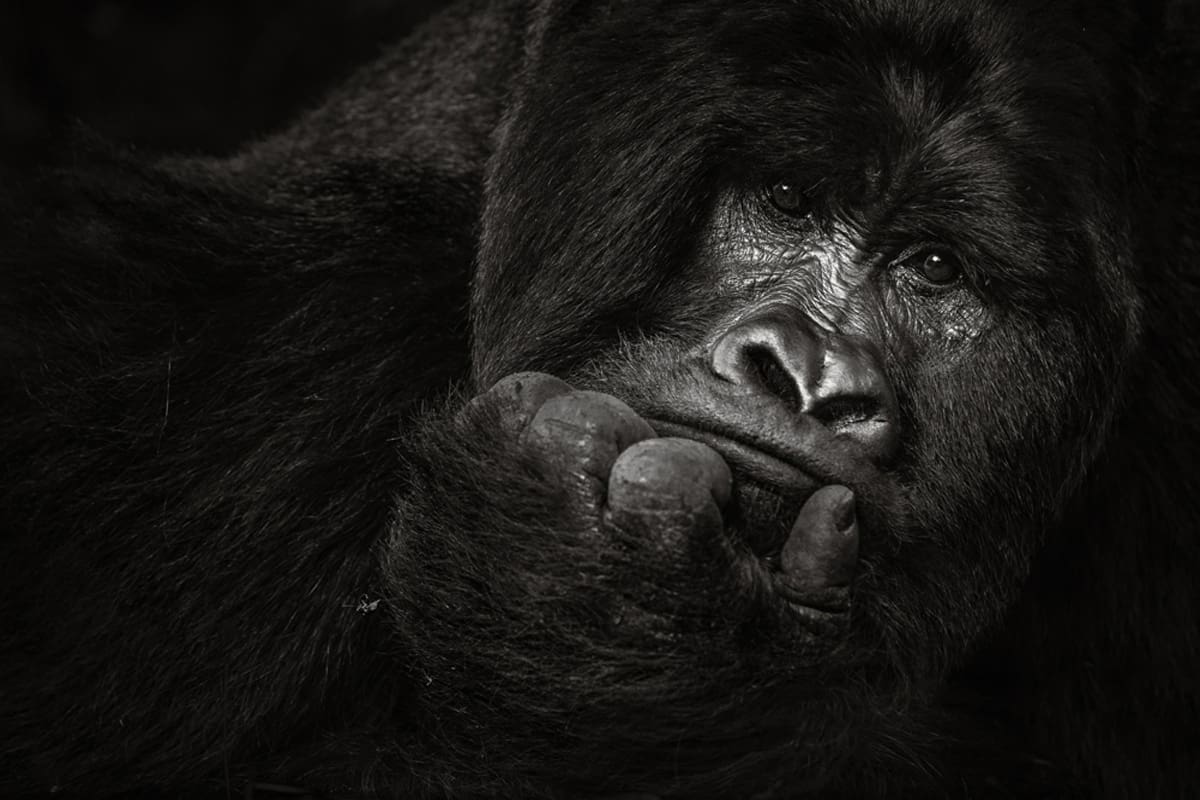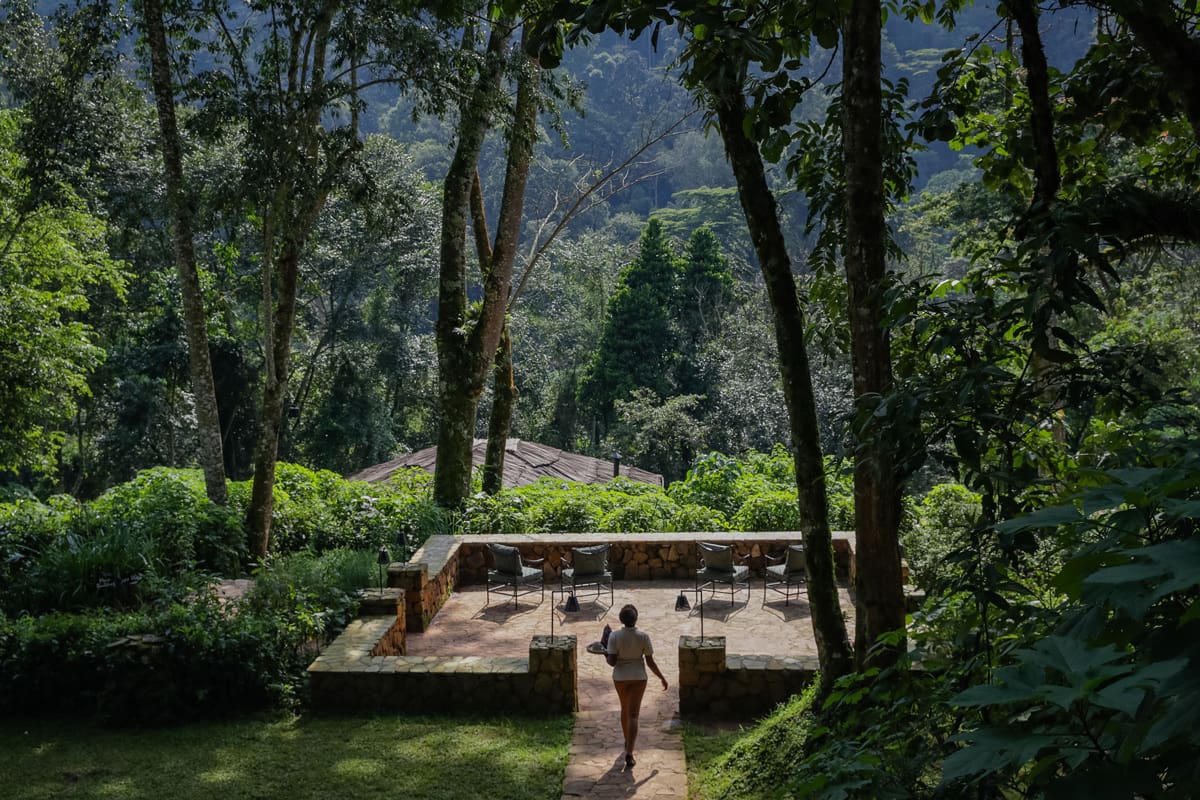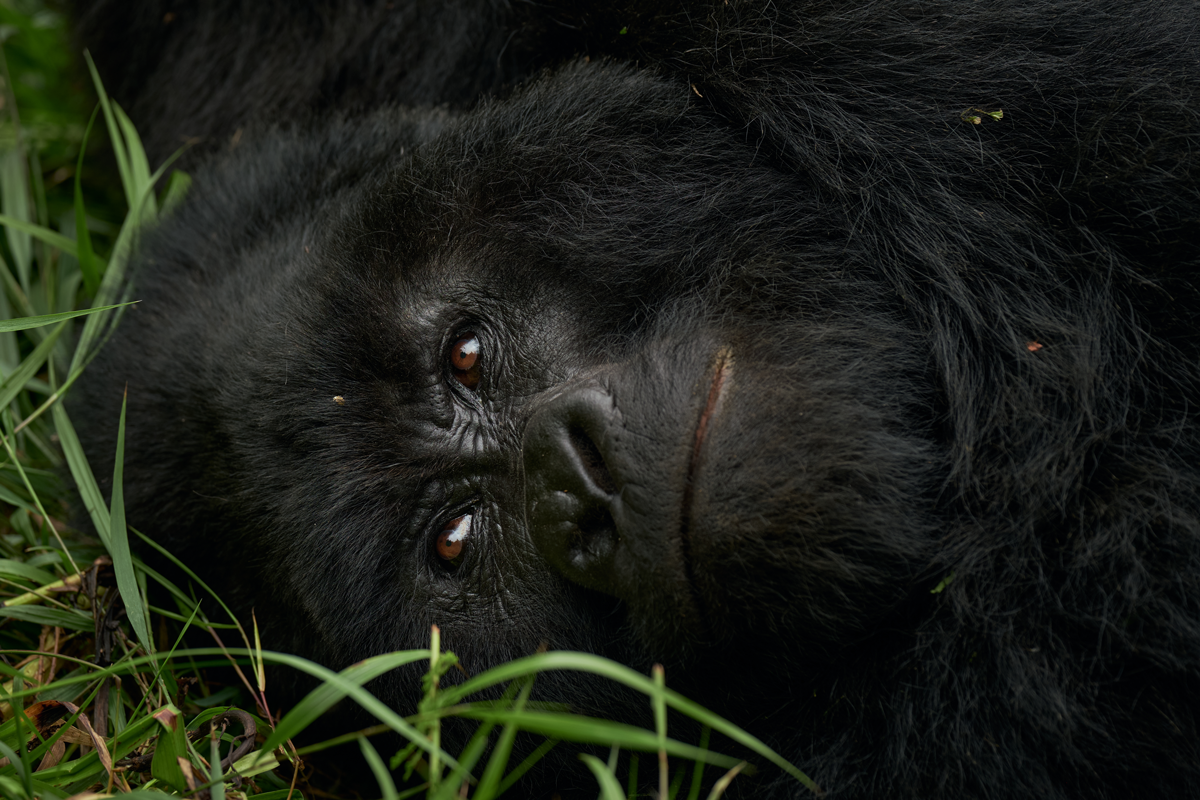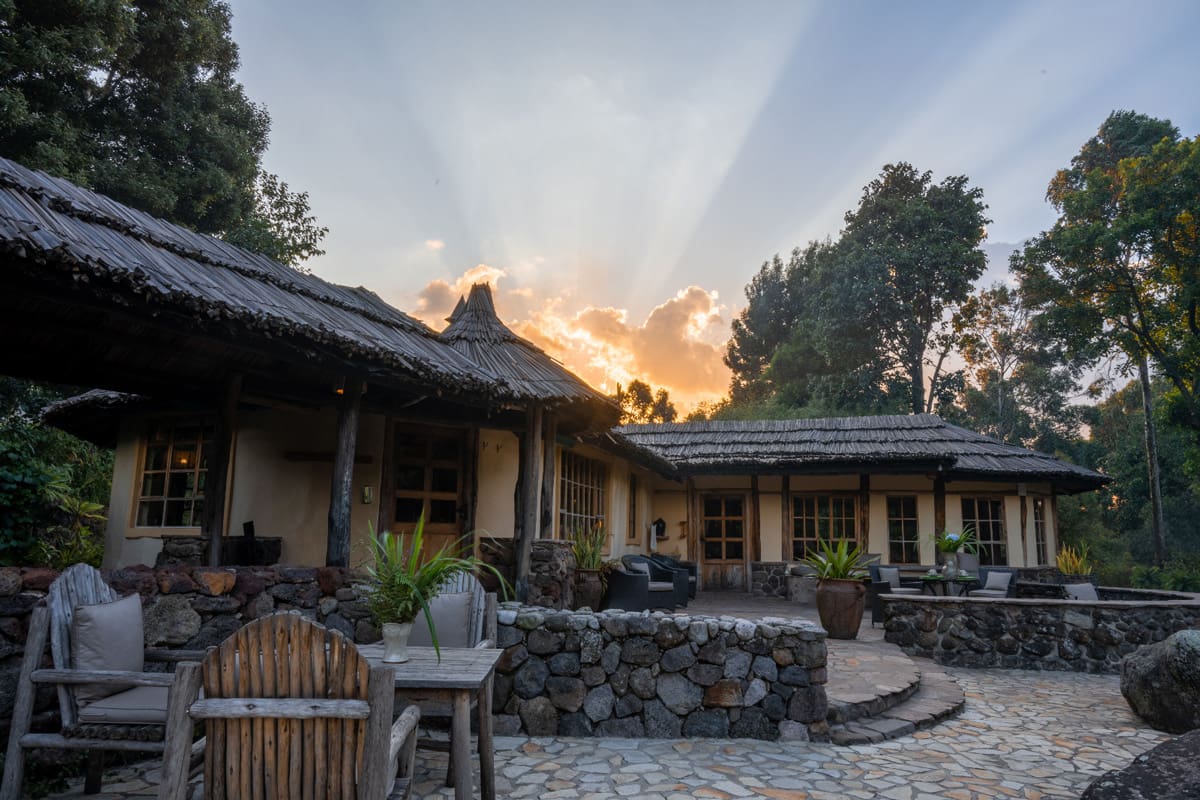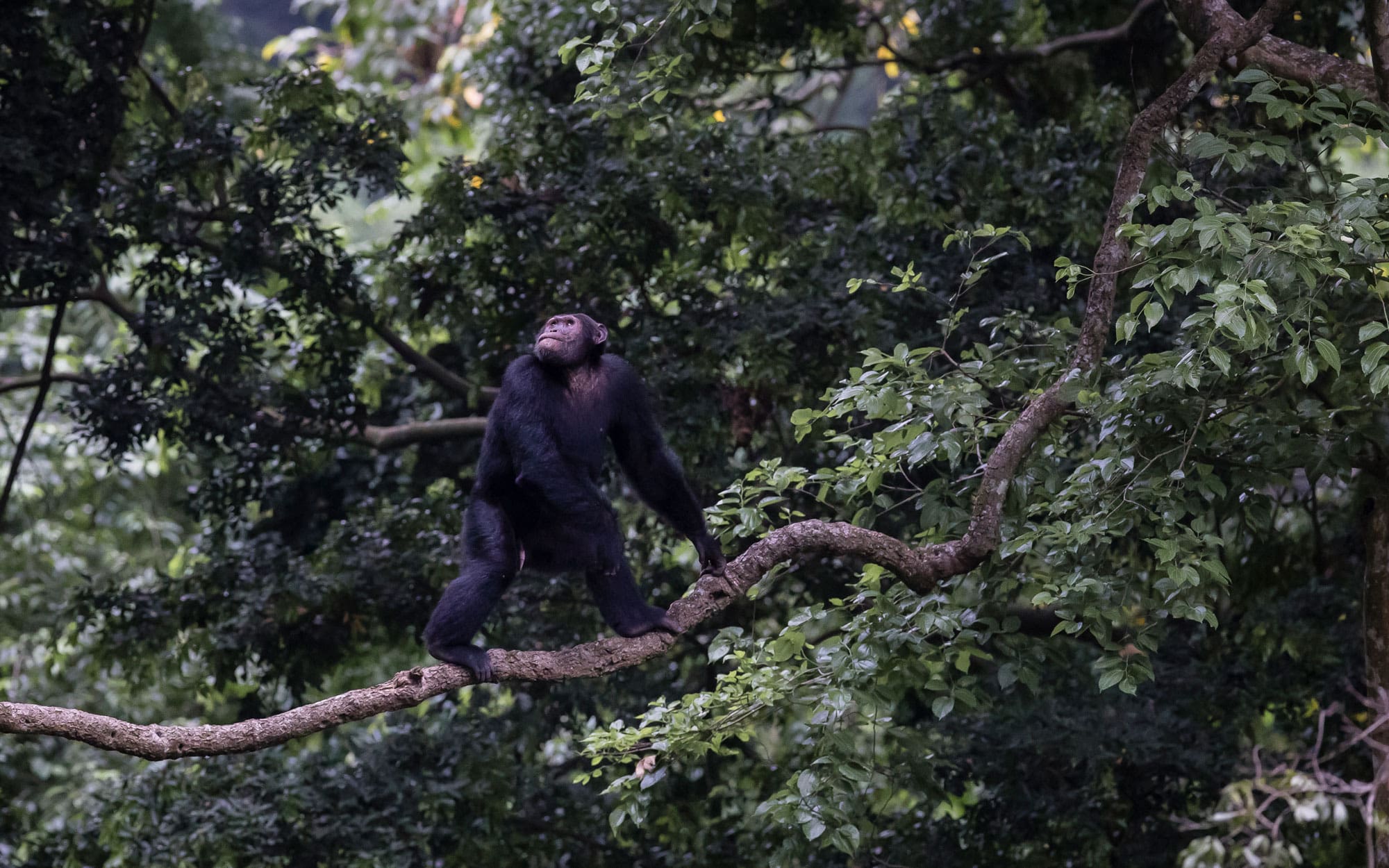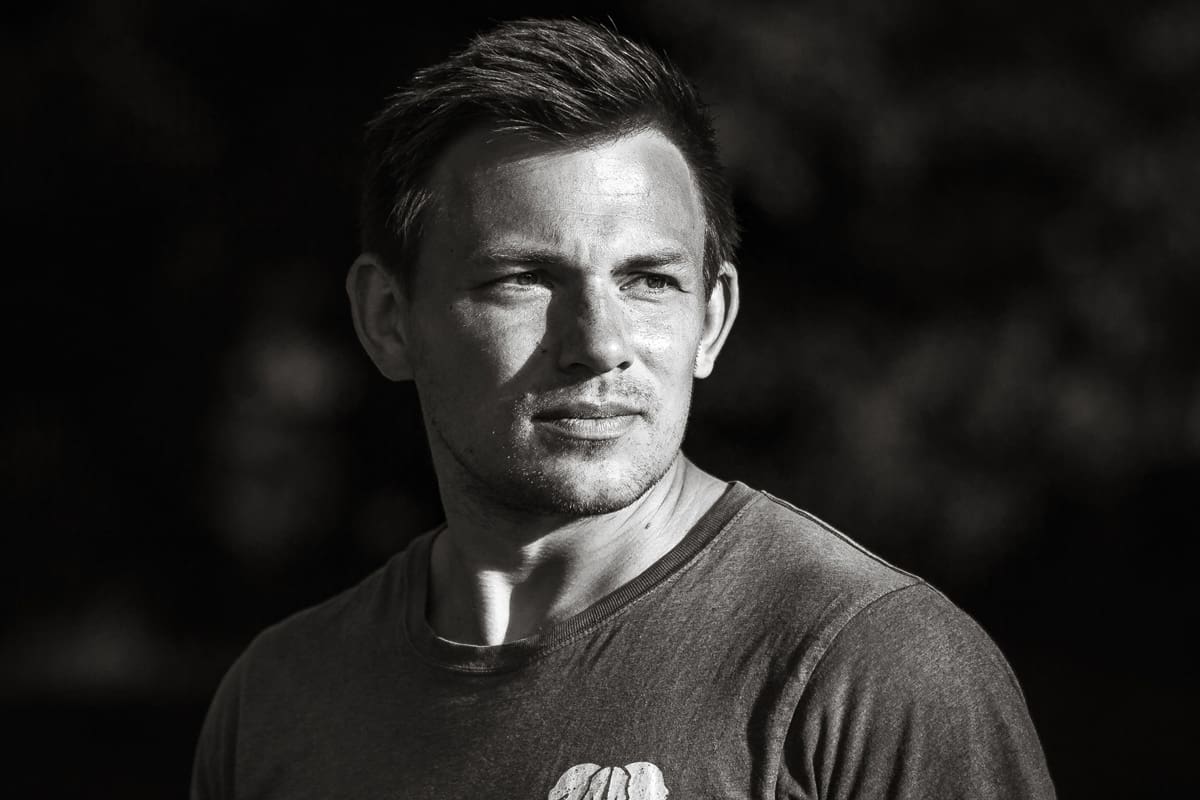
Tom is a leading wildlife photographer and is recognised for his powerful and engaging portraiture of Africa's large mammals, including the mountain gorillas in Uganda.
He has kindly shared his top 5 tips on how to improve your technique when photographing the mountain gorillas
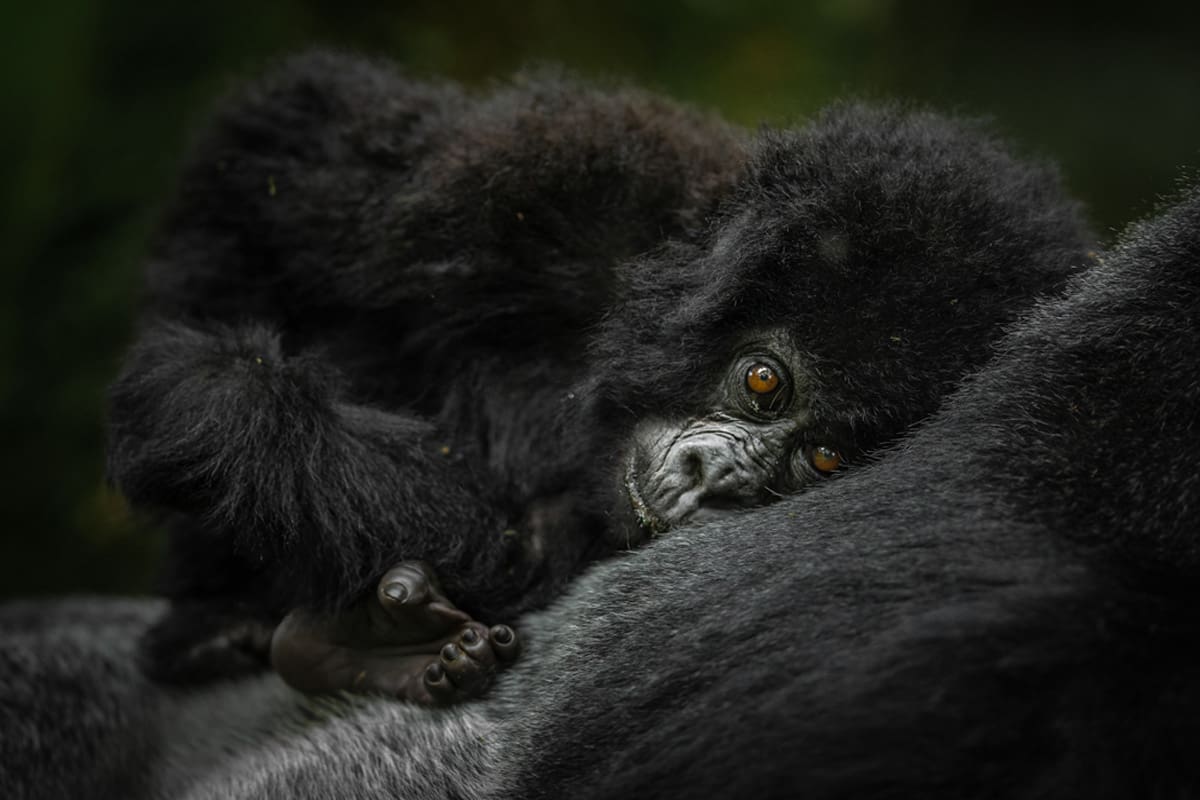
- Use a F2.8 Lens
Due to the thick forest and foliage, there are times when there is not much light to play with. By using a high aperture lens such as a F2.8 or F4 this will help hugely in being able to lift your shutter speeds in those dark areas. There is also the added advantage of blurring the foreground and background more than if you were to shoot at F5.6 - F8 for example. With such a thick and complex environment, by blurring the surroundings and keeping the gorilla in focus, you are in turn controlling the viewers eye and making sure they are focused on the main subject i.e. the mountain gorilla.
If I were only to take one lens to the gorillas that ticks a number of boxes and covers many eventualities, it would be a 70-200 F2.8 lens. The aperture will help with the dark and complex environment and the focal length enough for most encounters as you are able to be within 7-10m of the wildlife.
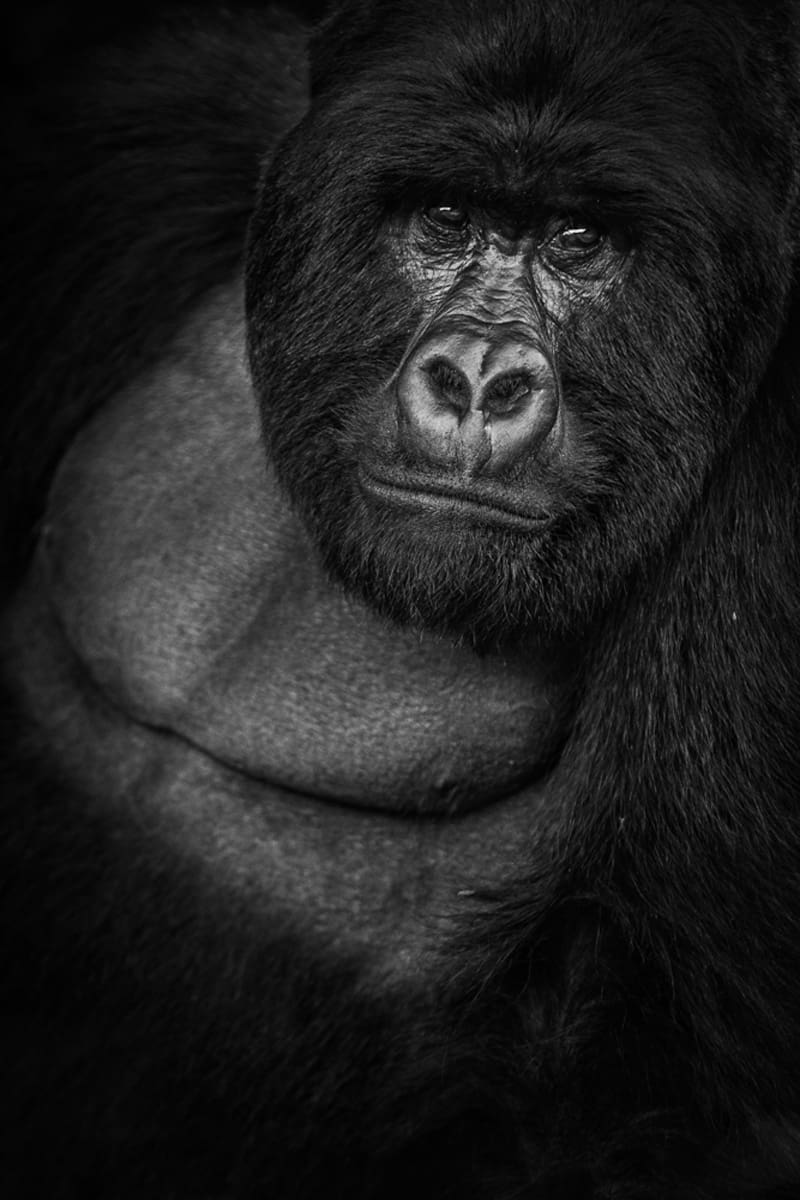
- Focus On The Eyes
When using larger apertures such as F2.8, the depth of field is very narrow. For the best accuracy I photograph with a single focusing point and make sure this is always over the eye when taking the shot. It can be very easy for the focus point to hit the gorillas muzzle or brow but both of these are proud of the eyes themselves and with such narrow depth of field when taking tighter portraits, if you do not focus carefully, the most important part of the photograph could be left slightly out of focus.
With more modern day cameras, we have the opportunity to use eye tracking and depending on which model and camera you are using, the results are very good. However, even with this technology I still find myself manually moving the focus point over the eye myself for the ultimate accuracy because in these situations we are not photographing fast moving subjects and you do have time to compose your image.
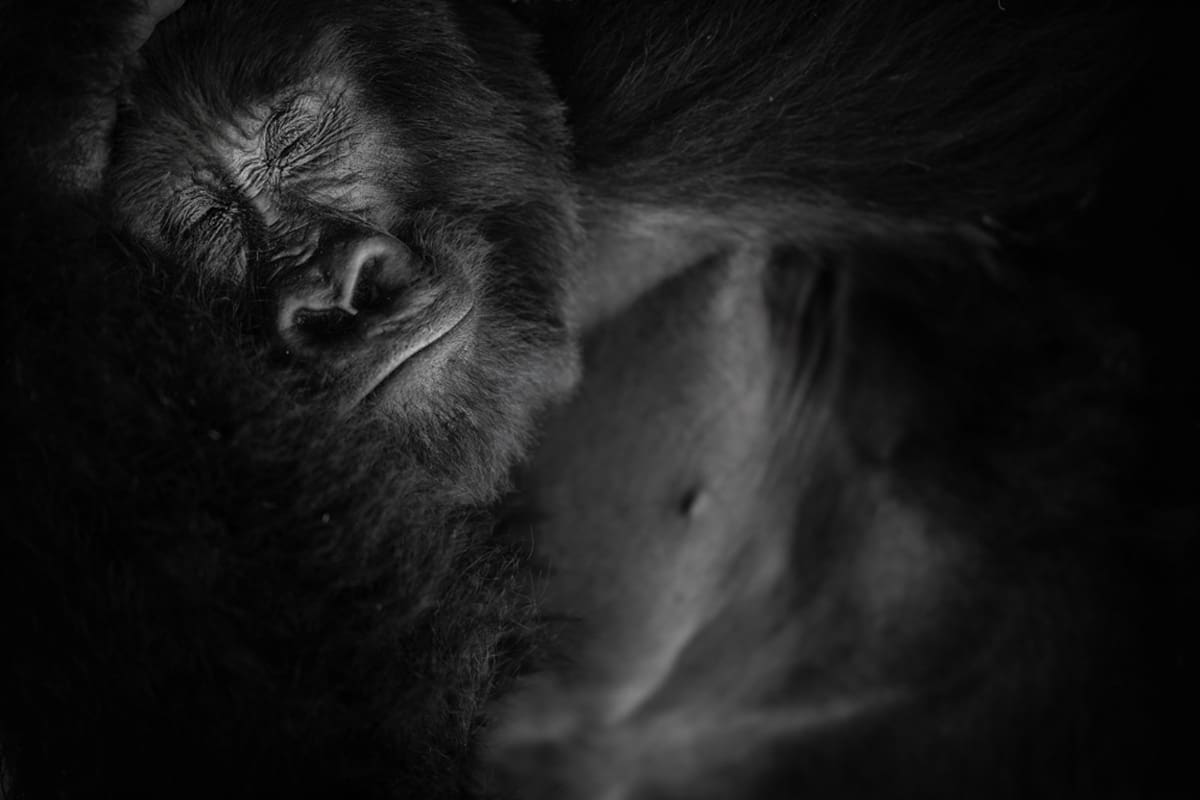
- Embrace The High ISO
Even with a F2.8 lens, there are still times where you will find yourself struggling for appropriate shutter speeds. After all, you are photographing a dark subject in a dark environment. You really just have to accept that you will be shooting at higher ISO’s than you are used to. If you are not pushing your ISO up to achieve the appropriate shutter speed, you risk taking an image where the gorilla is not quite sharp enough. Over the years I have learnt that it is better to have a sharp grainy photograph than an unsharp non grainy photograph.
When using a higher ISO, it is increasingly important that the photograph is taken well with the correct settings and exposure, as with the smallest amount of post-production the grain/noise can be reduced at a later date. Be careful not to take your photographs too dark as you will then need to lighten the picture later, and this will bring back more grain and noise into the photograph. It is also worth mentioning here then when it comes to printing your photographs (which I would highly recommend for the best results), the grain does not translate onto paper as much as you may think and you will not notice the noise.
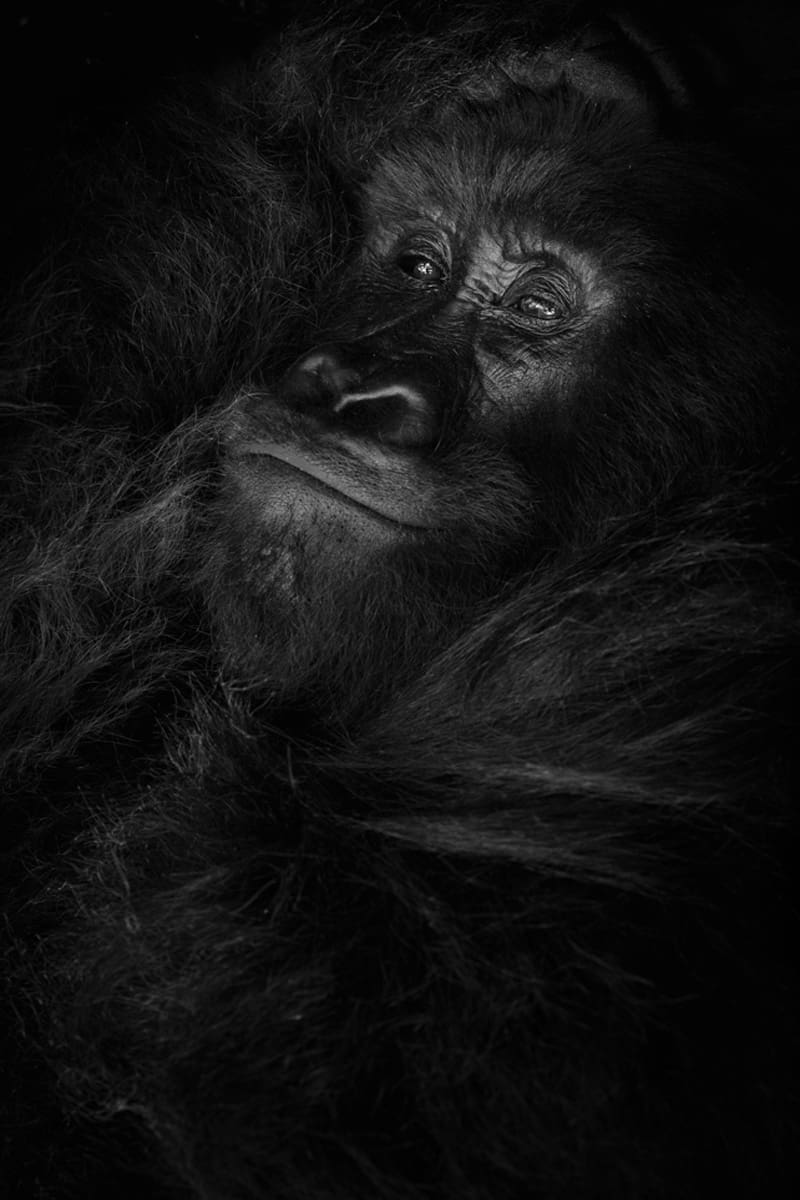
- Shoot In The Shade
Contrary to many wildlife photographic opportunities, when photographing mountain gorillas I personally look to photograph them in the shade. Typically by the time you find the group it could be in the late morning or early afternoon and by this point the strong African sun is high in the sky and therefore too harsh for the optimal photographs.
I therefore look for any members of the group that are fully in the shade where the light is consistent and there is little contrast. This ofcourse will push your cameras a little harder as the light will be lower, but you will be left with even tones and beautiful fur detail rather than the strong light bouncing off the glossy coats.
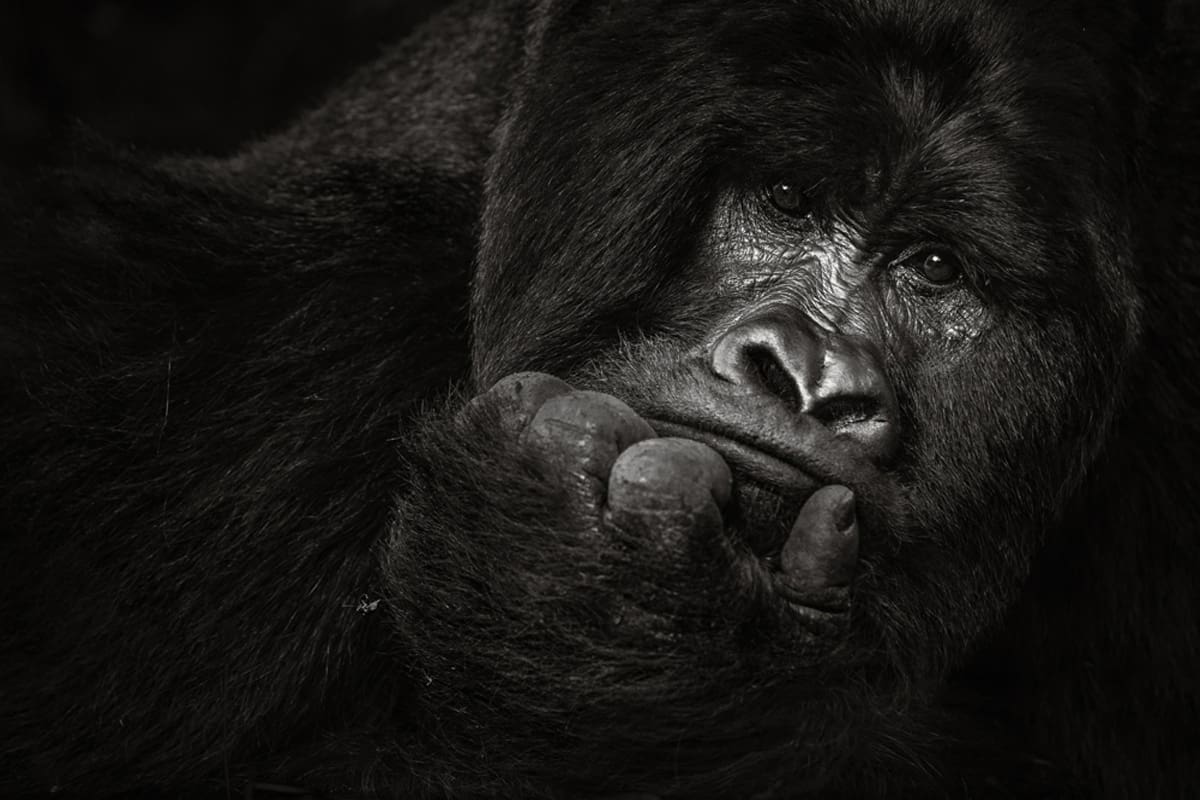
- Capture The Character
One of the fundamental elements to successful wildlife photography is the ability to capture the animals character and photographing gorillas is no different. As it happens, mountain gorillas are one of the most expressive animals I am lucky enough to work with and therefore capturing their character is easier than many other animals.
When taking the photographs I question ‘how do I want to represent this species’ - ‘what do I want the viewer to think about this species’. During gorilla trekking we see a number of different behaviours and my overall goal is to look for opportunities where the gorillas show their beauty, majesty and intelligence. These are the characteristics I would like to put across to the viewer.
A Word On Tom:
Tom Way is recognised for his both powerful and engaging portraiture of Africa's large mammals. Favouring a fine art black and white style of photography, his images are widely exhibited in galleries and exhibitions to then decorate the walls of peoples homes. His work has been awarded in the worlds leading photographic competitions including Wildlife Photographer Of The Year and GDT European Wildlife Photographer Of The Year.
Tom is an accomplished speaker and regularly invited to present at photographic events. He runs a limited number of photographic safaris each year with the aim of helping others with their own photography and inspire them to also take evocative wildlife imagery. Tom is close to completing his 50th Mountain gorilla trek and therefore spent a great amount of time photographing in close proximity to these incredibly special great apes,.
You are able to follow Tom's latest work via Instagram @tom.way.photography or by signing up to his quarterly newsletter.
